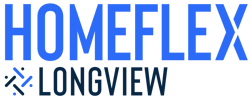
How to Access Equity in Your Home
There are many options for accessing equity in your home. Choose wisely.
![]() 4 MIN READ | By Brent Kealy | Updated on May 5, 2024
4 MIN READ | By Brent Kealy | Updated on May 5, 2024
You’ve lived, laughed and loved in your home. A renovation helped it mould to the changing shape of your family. Along the way, you’ve worked hard to make sure the mortgage gets paid like clockwork. The prices of homes have continued their steady march upwards.
The excel spreadsheet that helped you answer your mortgage broker’s questions ten years ago is completely out of date now. It turns out the amount you owe the bank is much smaller percentage of the value of your home.
The part you don’t owe is known as equity. It’s yours. That’s lucky because life has just presented you the unexpected, as life tends to do.
The unexpected challenge could be maintaining your current lifestyle while combatting higher interest rates and the rising cost of living. Whereas the unexpected opportunity could involve investing in a new business or helping a child with a house deposit of their own.
Either way, you can handle the unexpected by accessing the equity in your home.
There are many financial products on the market that can assist you, but its important to find one that best meets your needs and life circumstances.
In this article, we’ll quickly explain the following options for accessing equity in your home:
- Cash-out refinance
- Redraw facility
- Unsecured loans
- Homeflex by LongView
- Reverse Mortgage
Cash-out refinance
This option is just another name for a new mortgage with a debt that is larger than the remaining balance on your existing mortgage. This effectively allows you to access home equity that you’ve built up.
Aside from the obvious benefit of having more money to help you out with the unexpected, it can allow you to negotiate a better interest rate. Just be aware that there will be exit fees and paperwork associated with proving your income and assets with your existing and new lender.
Unsecured loans
While not technically accessing the equity in your home, unsecured loans and credit cards can give you fast access to money that will help you with the unexpected.
While available much faster than financial products that directly access equity in your home, they come with some significant downsides and should only be used as a last resort.
The interest rate will always be higher than a secured mortgage, it’s just by how much. Some unsecured loans may have interest rates that are a few percentage points higher. However, credit cards will likely be between two and three times the interest rate of your home loan.
HomeFlex by LongView
Debt breaks, but equity bends.
Loans are rigid in that they require you to make regular interest and principal repayments. A missed payment can quickly become two, then three. All of a sudden, the solution to life’s unexpected becomes a new problem of its own.
Longview’s HomeFlex equity release product works a little differently. Like a loan, it still provides you funds now, but instead of interest and principal repayments, it is paid out as a share of the increase in value of your home, and can be paid back at any time, or after you sell.
You can use this home equity calculator to see how much money you could access.
Reverse Mortgage
A reverse mortgage is a loan that requires repayment of all of the initial principal and compounded interest when you sell or move out of your home.
The big advantage of a reverse mortgage is that, like HomeFlex, there are no regular payments and the amount owed to your lender only needs to be paid once you sell your home.
The main disadvantage of a reverse mortgage is that it is still a debt with interest compounding day after day, year after year. In addition to this growing debt, the interest rate is usually higher than on a standard home loan.
Note: This article is general in nature and does not take into account your personal circumstances. Always seek professional advice before making any significant financial or legal decisions.
More from...

3 switches that will reduce mortgage stress
There’s a wide range of legal, financial and logistical things you’ll need to do to get ready for settlement. This article will help you navigate the steps you need to take before settling on your new home.
Read More
From Signing to Settlement: Pre-Settlement Checklist
To prepare for settlement, you'll need to handle various legal, financial, and logistical tasks. Start with the tasks listed first, as they need immediate attention, while the others can be completed later.
Read More




